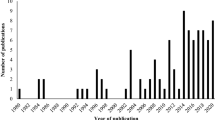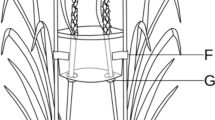Summary
Wall-pore sensilla in the capsule of Haller's organ on foreleg tarsi of the tick, Amblyomma variegatum, show multicellular responses upon stimulation with human and bovine breath. Filtering breath through charcoal removes the stimulant for some of these receptors. Analysis by gas chromatography coupled with olfactory sensillum electrophysiological recordings indicates that an ethanol extract of the breath components trapped on charcoal contains a major stimulant eluting at the same retention time as H2S. Two types of H2S-sensitive receptors have been identified. They are housed in separate sensilla, and are called sulfide-receptor 1 and 2.
Although, both receptor types are characterized by a high sensitivity to H2S with an estimated threshold of ca. 0.1 ppb and a response range covering 5–6 log orders of magnitude, their overall response to sulfides and mercaptans is nevertheless dissimilar. The type 1 receptor fires slightly more upon stimulations with H2S than type 2, whereas ethylmercaptan induces a stronger response from type 2, and dimethyl sulfide activates only receptor 2.
In a bioassay, H2S tested at concentrations of ca. 0.02 ppm and 1 ppm equally arouses 60% of resting ticks. Two-thirds of these ticks quest the air with their first pair of legs, and the remainder start active search. By contrast, H2S at ca. l ppm in a mixture with CO2 severely diminishes the locomotor stimulating effect of CO2.
Similar content being viewed by others
References
Al Roux H, Thibout E (1988) Analyse en olfactomètre de l'attraction des larves d'Acrolepiopsis assectella par des substances allélochimiques. Entomol Exp Appl 47:231–237
Auger J, Lecomte C, Paris J, Thibout E (1989a) Identification of leek-moth and diamondback-moth frass volatiles that stimulate parasitoid, Diadromus pulchellus. J Chem Ecol 15:1391–1398
Auger J, Lecomte C, Thibout E (1989b) Leek odor analysis by gas chromatography and identification of the most active substance for the leek moth, Acrolepiopsis assectella. J Chem Ecol 15:1847–1854
French FE, Kline DL (1989) 1-octen-3-ol, an effective attractant for Tabanidae (Diptera). J Med Entomol 26:459–461
Hall DR, Beevor PS, Cork A, Nesbitt BF, Vale GA (1984) 1-octen3-ol, a potent olfactory stimulant and attractant for tsetse isolated from cattle odours. Insect Sci Applic 5:335–339
Hungate RE (1966) The rumen and its microbes. Academic Press, New York
Kline DL, Takken W, Wood JR, Carlson DA (1990) Field studies on the potential of butanone, carbon dioxide, honey extract, 1-octen-3-ol, L-lactic acid and phenols as attractants for mosquitoes. Med Vet Entomol 4:383–391
Kneidel KA (1984) Carrion as an attractant to the American dog tick, Dermacentor variabilis (Say). J NY Entomol Soc 92:405–406
Krotoszynski B, Gabriel G, O'Neil J, Claudio MPA (1977) Characterization of human expired air: A promising investigative and diagnostic technique. J Chrom Sci 15:239–244
Lindvall T (1977) Perception of composite odorous air polluants. In: Le Magnen J, Macleod P (eds) Olfaction and taste VI. Information Retrievial, London Washington, pp 449–458
Mount GA, Dunn JE (1983) Economic thresholds for Lone Star Ticks (Acari: Ixodidae) in recreational areas based on a relationship between CO2 and human subject sampling. J Econ Entomol 76:327–329
Natynczuk S, Bradshaw JWS, Macdonald DW (1989) Chemical constituents of the anal sacs of domestic dogs. Biochem Syst Ecol 17:83–87
Norval RAI, Yunker CE, Butler JF (1987) Field sampling of unfed adults of Amblyomma hebraeum Koch. Exp Appl Acarol 3:213–217
O'Connell RJ, Singer AG, Pfaffmann C, Agosta WC (1979) Pheromones of hamster vaginal discharge. Attraction to femtogram amounts of dimethyl disulfide and to mixtures of volatile components. J Chem Ecol 5:575–585
Steullet P, Guerin PM (1992) Perception of breath components by the tropical bont tick Amblyomma variegatum Fabricius (Ixodidae). I. CO2-excited and CO2- inhibited receptors. J Comp Physiol A 170:665–676
Tonzetich J (1977) Production and origin of oral malodor: a review of mechanisms and methods of analysis. J Periodontology 48:13–20
Vale GA, Hall DR (1985) The role of l-octen-3-ol, acetone and carbon dioxide in the attraction of tsetse flies, Glossina spp. (Diptera: Glossinidae) to ox odour. Bull Entomol Res 75:209–217
Wadhams LJ (1982) Coupled gas chromatography-single cell recording: a new technique for use in the analysis of insect pheromones. Z Naturforsch 37C: 947–952
Waldow U (1973) Elektrophysiologie eines neuen Aasgeruchrezeptors und seine Bedeutung für das Verhalten des Totengräbers (Necrophorus). J Comp Physiol 83:415–424
Warnes ML, Finlayson LH (1985a) Responses of the stable fly, Stomoxys calcitrans (L) (Diptera Muscidae) to carbon dioxide and host odours 1. Activation. Bull Entomol Res 75:519–527
Warnes ML, Finlayson LH (1985b) Responses of the stable fly, Stomoxys calcitrans (L.) (Diptera: Muscidae) to carbon dioxide and host odours. 2. Orientation. Bull Entomol Res 75:717–727
Author information
Authors and Affiliations
Rights and permissions
About this article
Cite this article
Steullet, P., Guerin, P.M. Perception of breath components by the tropical bont tick, Amblyomma variegatum Fabricius (Ixodidae). J Comp Physiol A 170, 677–685 (1992). https://doi.org/10.1007/BF00198977
Accepted:
Issue Date:
DOI: https://doi.org/10.1007/BF00198977




